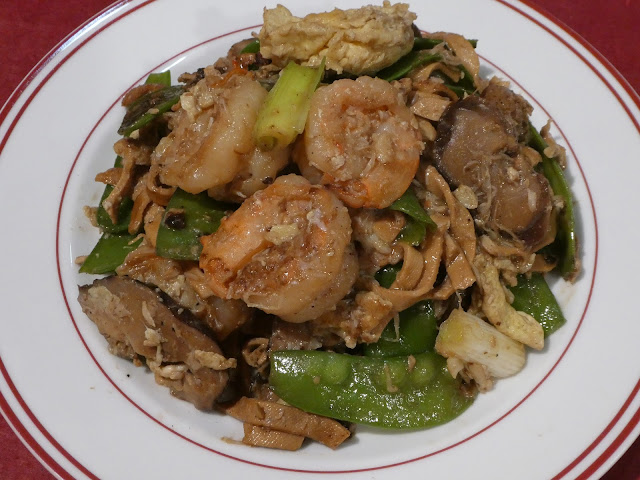Happy Lunar New Year! Thanks for following my recipes for
the past Lunar year. Although I’m a few days early in expressing my good wishes
to you, here’s a dish appropriate for eating on that day. Although this is not
a traditional dish for the New Year’s, it has ingredients often found in dishes
served on that day. Dungeness crab is a local delicacy found on the West coast
of the United States, but this year the catch has been low due to the weather
and other reasons, which has made the crab expensive this year. The year
before, the crabs were more abundant, so I still have some frozen in my
freezer. While freshly cooked Dungeness crab is always preferred, frozen also
works. The combination of the crab with the shrimp and scrambled eggs, makes
this dish. The sauce ingredients are also kept simple, so as to not hide the
seafood flavors of the ingredients. You’ll notice that there’s not much sauce
in this dish, which is the way I prefer to make this dish, but if you desire
more, there are instructions at the end of the recipe to increase the amount.
I’ve been concentrating on writing for my travel blog: https://ducksoupeasytravel.blogspot.com/,
so my output of recipes has been low for the past year. I apologize for those
who have been following this blog, but take a look at the travel blog. While I’m
still cooking (and eating!), I continue to photograph the dishes and have a
large backlog of pictures to process. Enjoy your Lunar New Year celebration and
I’ll see you next year.
Enjoy!




















